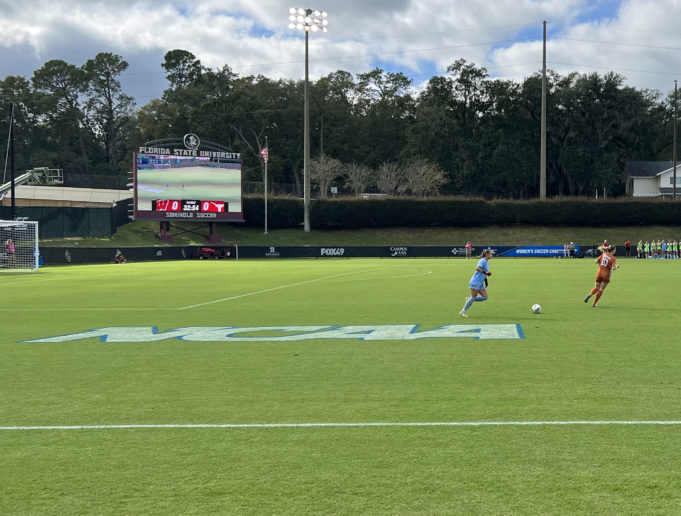College sports’ conference realignments tend to revolve around football.
To clarify that statement for non-US readers, we mean American football, not association football. But it occurred to me as I watched the game we call soccer this weekend that conference realignment offers lessons for both codes of football.
Sunday evening, I watched in Tallahassee as the ACC’s Florida State defeated the University of Texas in a women’s NCAA Tournament third-round game. The defeat marked the Longhorns’ final game as a member of the Big 12 conference.
On Friday, the undefeated Seminoles had beaten Texas A&M in the second round. The Aggies have shared two conferences with the Longhorns and will soon share a third. A&M had moved to the Southeastern Conference a little more than ten years ago motivated, as is the Longhorns’ move effective next season, by the SEC’s status as the country’s pre-eminent (gridiron) football conference (and the revenue opportunities associated with that status). Its members have won the last four college football national titles, plus six of the last eight and 13 of the last 17 (since Texas won in 2005).
One of those non-SEC champs was Florida State, a feat (understandably) on display in a number of places in proximity to the school’s football facility, Doak Campbell Stadium, located a short stroll from the Seminole Soccer Complex. As it turns out, FSU’s conference has historically enjoyed women’s soccer dominance rivaling the SEC’s record in the College Football Playoff and the CFP’s predecessor polls and BCSes.
North Carolina owns 21 titles. FSU has won three, as has Notre Dame. Stanford is about to join the conference and owns three wins of its own. The current (one, by Penn State) and future (four, split evenly among UCLA and USC) Big Ten ranks next with five. The West Coast Conference has four thanks to Portland and Santa Clara each owning a brace. George Mason of the Atlantic 10 has won it all once, though it came as a member of the Colonial Athletic Association. That A-10/CAA total equals that of the SEC – Florida won in 1998.
The state of Texas, despite its robust youth soccer programs, has yet to win women’s soccer’s College Cup. A&M and future ACC member SMU have come the closest, each making a single Final Four.
The current NCAA bracket’s final eight teams includes four current ACC members and their future conference mate Stanford. Two Big Ten teams and one from the Big 12 also remain alive. They’ve all been involved in conference moves at one point or another – remember when North Carolina and Clemson left the Southern Conference to help found the ACC in 1953? Women’s soccer didn’t play a part in the decision because they had no women’s varsity programs in those pre-Title IX days. Pitt joined the ACC in 2013. Penn State and Nebraska are both latter-day additions to the Big Ten. BYU is in its first season in the Big 12 after being courted by conferences for years.
Florida State joined the ACC in 1991 (football started conference play in 1992). They added women’s soccer in 1995 amidst a time of rapid expansion of the sport throughout Division I. In the 1990s, they thought the ACC a better fit than the SEC, though the school has recently indicated a degree of dissatisfaction with its current conference arrangements. Perhaps they will take their six total football national championships (three in the American code, three in the association version) to some new partners, and it’s not out of the question that each team could add another natty before the move. Women’s soccer ranks number one in the country and Tallahassee was abuzz Saturday night as football moved to 11-0 on the season.
All of those FSU national championships have come as a member of the ACC. When the soccer program joined the nation’s premier conference in that sport, its level eventually rose to meet that of its competition. For Texas (and Oklahoma, who will also move to the SEC), the challenge will be whether they can replicate such a rise in the sport for which their new league is most known: American football.
It hasn’t quite happened that way for A&M, who have not yet played in a SEC title game and who ironically just fired a former Florida State head coach, Jimbo Fisher, who had moved to A&M after winning a national title with the Seminoles. Texas’s head coach, Steve Sarkisian, came to Texas after a stint at the offensive coordinator at SEC power Alabama. The Longhorns are currently ranked in the top ten in their final Big 12 season. Can they continue the same magic in the SEC? Coach Sarkisian actually played a little soccer in his youth – he might look at what Florida State has done with that sport as he prepares for a new journey in his.












